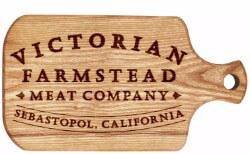by Diana Gray
We’ve talked a lot about the Paleo diet in September and learned quite a bit from our Cross Fit buddies. In doing my own research, however, I came across the term “primal”, which ended up throwing me for a loop- I thought Paleo and Primal were interchangeable terms. So, I decided to go right to the source and speak with Tiffani, who follows a Primal diet largely influenced by Weston A. Price. Tiffani Beckman-McNeil is a health coach, co-owner of Backyard CSA, and Locavore extraordinaire. As such, she is a wellspring of knowledge about healthy eating and the perfect person to give us the scoop on Primal versus Paleo eating.
The most major difference is that the Primal diet allows for consumption of dairy, legumes and beans. When eating these things, however, Tiffani stresses that it is important to go for quality. For instance, pasture raised, raw dairy from grass-fed cows is best. Beans and legumes need to be properly prepared (pre-soaked and sprouted is best) as opposed to being eaten from a can. Why the focus on quality? Nutrition. Dairy products from healthy cattle will provide your body with more than what you could get from factory farmed dairy. Same idea with beans and legumes- you want to sprout them in order to get the most from them and avoid consuming phytic acid.
Both the Paleo and Primal diets universally shun corn, as it is infamously worked into just about every processed item you can find in your traditional grocery store. Bread is also a no-no. Not even whole wheat, or sprouted wheat (I asked- I love bread). That said, Tiffani feels that limiting intake is a huge step in the right direction. And the really good news? Traditional sourdough (the kind you put together, then let rise and ferment in the laundry room for hours on end) has ingredients that can help combat gluten (if that is a concern for you.) While many people do well on a limited gluten or gluten free diet, Tiffani does recommend (as the article suggests) finding your sweet spot and eating what makes you feel your best.
What this means is: some people do well with the Paleo diet. Others do well going Primal. Some of us are neither and believe that everything in moderation is the way to go. To help find your sweet spot, Tiffani highly suggests taking a metabolic typing test (there’s a free one here– it asks for your email address but you can always unsubscribe from newsletters later.) Having the correct balance of macronutrients and knowing what ratio of fat/ protein/ veggies your body needs is a big step in the right direction.
I don’t claim to be an expert on either of these diets, but it seems that the biggest take-home lesson from both is: DON’T EAT CRAP. Eat local, fresh foods, minimize your intake of processed junk, try to give sugar the boot (if you figure out how to do this, please share) and listen to your body. And, as Adam always touts, it’s ok to have your “cheat foods” (his is famously those 99 cent tacos at Jack in the Box. Mine? I’ll never tell!)

Hi ~
This article was o.k. but basically does a great disservice to a very large movement which was a spin off of the paleo way of eating some years back. Specifically I’m referring to The book: “The Primal Blueprint” by Mark Sisson who has created a whole online community with his Blog Mark’s Daily Apple and expanded the paleo diet into a complete lifestyle. To not credit him is pretty much missing the boat! I don’t know that there was anything called “primal” before his book, and I never ran across that term in reading the Weston A. Price website – which don’t get me wrong is great stuff – but is NOT anywhere close to a paleo or primal approach since they still include grains and legumes. The primal from Primal Blueprint includes neither of those. But, in this respect the article got it right: To feel best, regardless of the gritty details of dairy or no, legumes or no, etc. STICK TO: “clean” unprocessed, whole, unadulterated foods, and as much as possible, organic &/or pasture raised.
These days I must say though, that I am getting concerned at the rising cost of food and how many people will be unable to eat the best quality as these prices continue to rise (actually it’s the inflation that is continuing to rise, not the price of goods themselves). Eating local and growing some of your own veggies helps but meat and cheese prices in particular seem to be going through the roof. Thank you for the ways you are helping keeping meat affordable.
Hey Christina! Thanks for reading and leaving such a thoughtful comment. Admittedly, my understanding of the Paleo and Primal eating styles are probably still lacking quite a bit and I am always happy to stand corrected.
I very much agree about the price of quality food. I think a huge part of the problem is that the living wage is far too low and leans heavily on an “average” grocery bill of factory farmed meat, dairy, mono-cropped produce and heavily processed products. We do what we can to keep costs down, but meat and cheese prices are indeed rising due to (as I’m sure everyone’s sick of hearing) record drought conditions, among other things.
Thanks again for reading. Cheers!